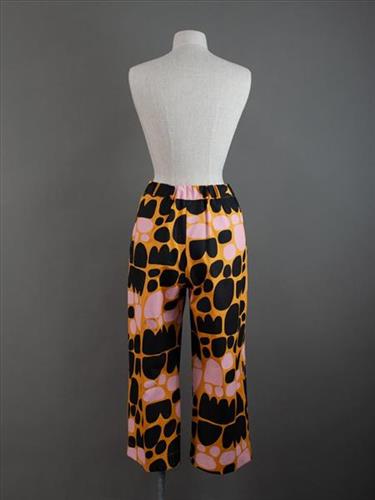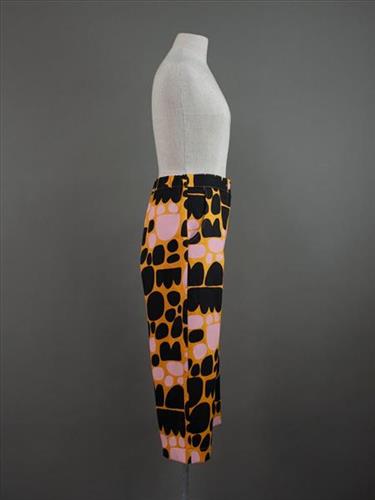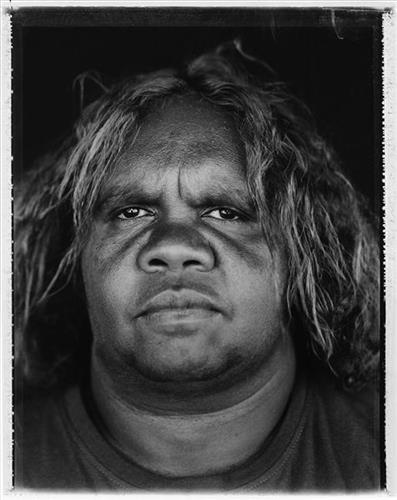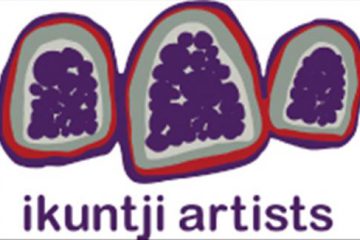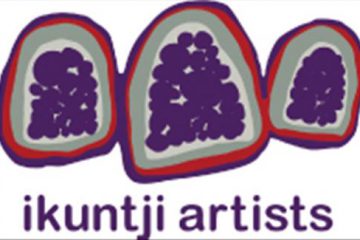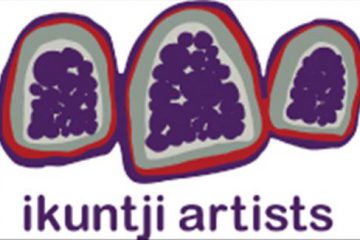Biography:
Keturah was born in Haasts Bluff in 1978. She is the youngest daughter of Molly Napaltjarri Jugadai and Smithy Zimran. Keturah’s grandparents on her mother’s side are Narputta Nangala Jugadia and Timothy Jugadai Tjungurrayi. Narputta was a founding member of Ikuntji Artists and had been painting since the beginning of the Western Desert Painting Movement of the 1970s. Narputta was born at Karrkurutjintja (Lake Mcdonald). The rights to this country were passed to her from her father, Talaku Tjampitjinpa. This was then passed down to her mother, Molly and onto Keturah. Keturah’s grandmother and mother have since passed away, with Keturah being the only remaining daughter in this lineage of artist to still be painting this story.
Keturah’s father, Smithy Zimran was the younger brother of Ronnie Tjampitjinpa and Yuyuya Nampitjinpa. He was the youngest son of Uta Uta Tjangala’s older brother, Minpuru Tjangala. Uta Uta was the father of the late Ikuntji artist Kumuntjai Nampitjinpa Dixon and one of the founding members of the acrylic painting movement in Warumpi (Papunya). Smithy’s country is around Lampintja, southwest of Walungurru (Kintore). Smithy was born in 1949 out bush in Pinari near Walungurru (Kintore). He came to Ikuntji (Haasts Bluff) as a child in 1956 with his parents and later joined the Pintupi exodus to Kintore 1981. Smithy was an important leader and educator over his life, leading CANCA (Combined Aboriginal Nations of Central Australia) with its landmark Kalkaringi Statement and the establishment of a dialysis unit in Kintore. Smithy painted with Papunya Tula Artists in the 80s and 90s. He passed away in 2000.
Coming from a lineage of established artists, Keturah began painting seriously in 2005. Developing her own distinctive and bold style, she is fast becoming renowned both nationally and internationally. Most notably, her work is now a part of the Parliament House Collection and has been a finalist in numerous art awards including the 2019 Vincent Lingiari Award.
Keturah is married to Ikuntji male artist Billy Pareroultja and is a mother of eight young children.
This is her life story in her own words:
“I was born here and grew up here. I stay here a long time, Ikuntji is my home. My mother is from here my father is from Kintore. He is in the graveyard near the church. When I was little, I would watch my grandmother and mother paint. It was when I was young, I realized I wanted to paint. I started painting in 2005 and my brother paints as well. He paints waru, bush fire Dreaming.
I paint about the sand hills my mother also painted about the sand hills and the Napaltjarri sisters. I have my own family now. I have seven children. I have two granddaughters and two grandsons. My husband is also a painter. He paints about his grandfather’s country: Lake Mackay. I like to paint; painting helps me forget my troubles. I paint every day.
My Grandmother used to say to me when I was younger: “One day you will paint.” She told me to not go wrongly and to look after myself and go strong.
When I look at my paintings, I feel happy. My mother and I were closer when I was painting; I wish to be always able to paint.
When I was eight, we went to Lake Karrkurrutingtja, we walked around the lake, I remember playing with the white sand and then we all went swimming. Joe Multa and Timmy Jugadai came looking for us at night.
The sand hills I paint are my mother’s story and the rocks I paint are my own story. My paintings are about my story and my mother’s. Jeffery is my other brother he plays in a band and is also a painter. I am proud of my brothers.
Originally, we grew up on my father’s side in Kintore. Then, when I was ten, we moved here (Haasts Bluff) and I grew up with my grandmother. My mother joined us in 1985, a long time later. When I was in Kintore, I went to school where my father worked in the office, he was also a church person. He was a pastor and looked after people. He moved to Alice Springs when he got sick. My father gave me my name from the bible, it comes from the genesis 26. Keturah comes from the bible and it’s the name of Abraham’s wife. My mother worked in the Clinic as a Health worker.”

